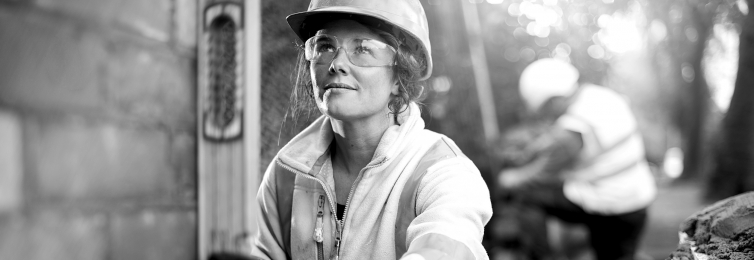In the most recent OSHA statistics (2019), fall protection is No. 1 of the Top 10 OSHA-cited standards. In other words, when inspectors go to job-sites big and small, the most frequent safety failure they witness involves fall protection. A stat that is equally as important, and informative, is what lands at No. 8 of that Top 10 list, OSHA Standard Number 1926.501, or “Duty to have fall protection.” This is the standard that requires employers to take responsibility for job-site workers fall protection safety.
Based on his extensive experience in the field, Builders Mutual Risk Management Consultant Bernard Urtecho has discovered that most workers on the job-site determine for themselves when they need to use fall protection based on their own subjective feelings—not on OSHA requirements. Between employer duty and employee action (or inaction), there seems to be a knowledge gap. In this article, Urtecho shares insights about this life-preserving topic to help ensure your fall protection doesn’t fall short.
How high is too high?
Construction workers are hearty, brave people. From the GC and each on-site function to every tradesperson, these individuals push their bodies daily to repair, build, and create for a greater good. The familiarity of the building environment often means conquered fears and a sense of invincibility. In fact, when one roofing contractor was asked the question, “How high do you have to be until you feel like you need fall protection,” his answer was surprising, “About five stories up.”
So, how high do you have to be until you need fall protection? According to OSHA, the answer is six feet as measured from the bottom of your feet to the floor below. That’s not even a single story above ground.
Duty falls on employers
OSHA standards require employers to provide fall protection systems. But that responsibility is not just regarding company employees. It applies to subs and even the subs of your subs—it is for anyone on your job-site (multi-employer worksites). As the employer, you must ensure that workers not only have the proper fall protection equipment and use it, but that they also have received the appropriate education and training for its use. Workers must be equipped to make good decisions about protecting themselves. They need to be taught which fall protection equipment or action is right in various circumstances and know how to correctly apply it.
Beyond providing the instruction itself, employers must also document the dates of training and materials used, as well as get employee signatures to indicate participation. Evaluations are also required to be performed and documented. These would include determining the types of fall hazards present and assessing how employees are handling them to avoid a fall. Then, if an OSHA site visit results in a citation, the employer can show proof that training was provided—dates, times, equipment used, etc.—to defend against the violation.
Responsibility doesn’t stop with education and evaluation. According to OSHA, employers must correct issues when insufficiencies are seen and then document action taken. Again, this holds true for your own employees, subs, and subs to the subs. If an OSHA representative were to show up at a job-site and see a tradesperson doing something wrong, the employer would be cited. If you, as the employer, can show documentation that you have done training, evaluation, and made the necessary corrections, you may avoid the citation. Employers will also have to produce the letters, emails, etc., proving to have noted the insufficiency before, warned the worker, corrected them, and communicated all this to the employee and/or the company for whom that employee works.
This issue is a huge hole in job-site safety. Contractors hire subs and think that they are not responsible for those workers or the workers’ tools, PPE, fall protection, etc. They hire competent subs, presume they have what they need to do the job, and move forward. But, per OSHA’s stand on safety, the owner of the project must remain in charge.
Daily due diligence
So, how should employers stay on top of fall protection? When working directly with your employees, start each day with a huddle. Discuss the projects and activities for the day, where work will be done, and the potential hazards. Most importantly, make sure everyone has everything they need to do the job safely—and that they are confident about exactly what that means. Emphasize that each member of the team is a professional, and professionals in this industry use fall protection, implement guardrails, use appropriate PPE, etc. Professionals work safely.
Regarding subcontractors, employers can assess the job-site for potential hazards during the course of the project and maintain open lines of communication to ensure everyone is trained to handle any issue that may come up. Always document these conversations and that subs are following OSHA protocols.
This OSHA standard is another reason why using a subcontractor agreement is a necessity. It demonstrates that you, as the employer and the one ultimately responsible for the project, follow the rules. When you see that someone is not performing their job correctly, take photos, document the scenario, then send that information to them and their supervisor (if he or she is a sub). These actions are the only defense against an OSHA citation.
Job-site safety, specifically fall protection, begins with the employer and starts well before anyone steps on a ladder or roof. If you would like to learn more about fall protection or duty to have fall protection (OSHA 1926.501), please reach out to your Builders Mutual Risk Management Consultant.




 Find an
Find an